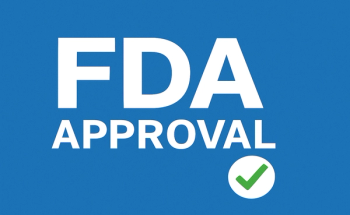
Study Summary: ARISE
Background
Most preventive drugs that have been used for migraine were originally developed for other medical indications, and they are often associated with a lack of efficacy or intolerable side effects that cause patients to discontinue treatment. This highlights the need to develop effective and tolerable migraine-specific drugs.1
The migraine-specific drug erenumab, a fully human monoclonal antibody that targets and inhibits calcitonin gene—related peptide (CGRP), is under evaluation for preventive treatment of patients with migraine. CGRP is a neuropeptide that is considered to be involved in the pathophysiology of migraine.1
In the phase 3, randomized, double-blind, placebo-controlled, ARISE study, Dodick and colleagues sought to investigate the efficacy and safety of erenumab in migraine prevention.1
Study Design
ARISE was conducted at 69 centers in North America and Europe, from July 2015 until July 2016. Patients enrolled in the study were adults 18 to 65 years who had a history of 4 to 14 migraine days per month, with or without aura, for at least 12 months before the study began. Patients were excluded if they were older than 50 years at the time of migraine onset or if they had a history of hemiplegic migraine or cluster headache. Although patients with previous treatment failures were eligible to join the study, the investigators excluded those who had experienced treatment failure with more than 2 classes of migraine-preventive medications.1
The initial screening phase of the study lasted up to 3 weeks. After screening, eligible patients entered a 4-week baseline phase during which they used electronic headache diaries. They continued to use these diaries during the double-blind treatment phase of the study, recording details about their migraine and nonmigraine headaches, including the date and time of headache onset and resolution, pain severity and features, associated symptoms, use of any acute headache medications, and patient-reported outcomes (PROs) via the Migraine Physical Function Impact Diary (MPFID).1
For the double-blind treatment phase, the investigators randomly assigned patients in a 1:1 ratio to receive a subcutaneous injection of either erenumab 70 mg or placebo monthly for 12 weeks. A 28-week open-label treatment phase then followed, during which patients received 70 mg erenumab monthly.1
All of the study’s end points evaluated change from baseline to month 3 of the double-blind treatment phase. The primary end point was the change from baseline in mean monthly migraine days (MMDs). Secondary end points were at least a 50% reduction in MMDs, change in the number of days of use of acute migraine-specific medication (MSMD), and at least a 5-point reduction from baseline in MPFID Physical Impairment domain score (MPFID-PI) and MPFID Impact on Everyday Activities (MPFID-EA) domain score.1
safety
The investigators also examined the of the study treatments by monitoring the occurrence of adverse events (AEs) and serious AEs (SAEs). They also performed electrocardiograms (ECGs) and laboratory assessments on the patients and checked their vital signs and anti-erenumab antibody levels.1
Results
The study comprised 577 patients, 286 in the 70-mg erenumab group and 291 in the placebo group. Baseline demographics and disease characteristics were well balanced between the 2 groups, with most patients being white and female, with an average age of 42 years. Overall, at screening, 46.1% of the patients had used migraine-preventive medication and 87.2% had stopped using 1 or more medications because of treatment failure or intolerable side effects.1
During the 4-week baseline phase, patients experienced a mean of 8.3 MMDs and 3.6 MSMDs, and 61.0% of patients used acute migraine—specific drugs. Erenumab was superior to placebo for the primary end point.1
From baseline to month 3 of the double-blind treatment phase, the least-squares mean change in MMDs decreased by 2.9 for patients receiving 70 mg of erenumab and by 1.8 for those receiving placebo. The difference between the erenumab and control group was significant (P <.001), with a least-squares mean (95% CI) treatment difference of —1.0 (–1.6 to –0.5) days.1
Erenumab was also superior to placebo for the key secondary end points of at least a 50% reduction in MMDs (
Changes in PROs, however, were not statistically significant between the 2 groups. Data from the MPFID showed at least a 5-point reduction from baseline in 33.0% of patients in the erenumab group and 27.1% in the placebo group in the MPFID-PI (P = .13) and by 40.4% and 35.8%, respectively, in the MPFID-EA (P = .26).1
The safety profile of erenumab was similar to that for placebo, with AEs reported by 48.1% of patients in the erenumab group and 54.7% in the placebo group and SAEs reported by 1.1% and 1.7%, respectively. Five patients (1.8%) given erenumab and 1 given placebo (0.3%) experienced an AE leading to discontinuation of the study regimen. The most frequently reported AEs in both groups were upper respiratory tract infection, injection site pain, and nasopharyngitis. No patients died during the double-blind treatment phase of the study. Additionally, 4.3% of patients who received erenumab developed antibodies to erenumab. One of these patients tested transiently positive for neutralizing antibodies at week 4, but tested negative for them at each subsequent visit. No patients experienced clinically significant changes in serum chemistry, hematology laboratory values, ECGs, or vital signs.1
Conclusions
Erenumab treatment at a dosage of 70 mg each month can significantly reduce migraine frequency and use of acute migraine—specific medications in patients with episodic migraine. The results of this study add to those from other phase 2 and 3 trials of erenumab in episodic and chronic migraine and support its use as a migraine preventive treatment in this patient population.1
The incidence of AEs was similar among the erenumab and placebo groups, and the results did not suggest any particular safety risk with erenumab. The favorable safety and tolerability profile of erenumab may help improve patients’ adherence to therapy. However, additional studies are still needed to further examine the long-term safety of this drug. The 28-week open-label extension phase of this study will collect additional mid-term safety data on patients treated for up to 40 weeks (including the 12 weeks of the initial double-blind phase of the study). Nevertheless, longer-term data from large-scale studies will be essential to better evaluate the safety profile of erenumab and to test the durability of its treatment effect.1
Reference
1. Dodick DW, Ashina M, Brandes JL, et al. ARISE: a phase 3 randomized trial of erenumab for episodic migraine. Cephalalgia. 2018;38(6):1026-1037. doi: 10.1177/0333102418759786.
Newsletter
Stay ahead of policy, cost, and value—subscribe to AJMC for expert insights at the intersection of clinical care and health economics.









































